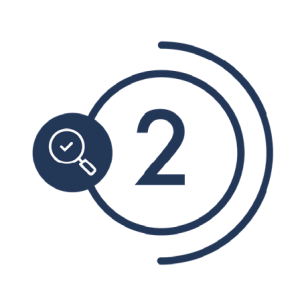EXECUTIVE SUMMARY
Tremendous progress has been made in reducing mortality among children under the age of five (under-five mortality or U5M), but over 5 million children still die every year*1 and most of these deaths are from preventable causes. “Exemplar” countries that have succeeded in reducing U5M present lessons that can be helpful for other health decision-makers looking to reduce U5M in their country contexts.
Exemplars in Global Health is an interactive platform and suite of online and offline services and tools designed to help health decision-makers understand the factors that have contributed to success in Exemplar countries. The goal of Exemplars is to disseminate best practices to inform global health strategies, policies, and budgeting, focusing initially on areas such as stunting, vaccines, U5M, and COVID-19, as well as the use of community health workers to deliver critical health services. The Exemplars network is composed of subject matter experts who believe that rigorously understanding global health successes can help drive better resource allocation, policy, and implementation decisions.
In 2020, the Exemplars team was preparing to launch its suite of tools globally. In advance of the launch, the team wanted to develop a partnership strategy and identify priority implementers, influencer, and donor organizations that were best
positioned to implement Exemplars tools and services.
*1 Source: WHO Global Health Observatory Data, 2018. Available from: https://www.who.int/gho/child_health/mortality/mortality_under_five/en/
SERVICES
- Design Thinking
- Landscape Analysis
- Business Intelligence
- Market Mapping
- Team and Stakeholder Engagement
- Strategic Communications
“That’s where we came in.”
Databoom combined a rigorous landscape analysis with design thinking to help the Exemplars team identify potential partners, gain insight into how the partners work and what their needs are, and identify how partners could benefit from Exemplars. We generated a set of partnership leads for the team so they could target the right implementers, influencers, and donors with Exemplars tools and services.
We first defined what it means to be a “partner.” Successful partnerships advance one another’s mutual interests and are founded on mutual respect and commitment to a shared vision. We then followed a 5-step process to conduct a landscape analysis and formulate a partnership strategy, focusing on two priority topics for the Exemplars launch: U5M and community health workers (CHWs).
 Identified priority partners
Identified priority partners
To identify potential partners, we conducted a landscape analysis. We focused on:
- Major players delivering U5M and CHW interventions in countries with high U5M and health systems in need of strengthening
- Implementing organizations that provide technical assistance and programs to reduce U5M or that use CHWs to deliver services
- Influencers that provide thought leadership and political sway to reduce U5M or promote the use of CHWs
- Funders that provide the largest grants to support U5M and CHW programs
 Gained insight into how partners work
Gained insight into how partners work
To understand how potential partners are organized and what they do, we conducted a desk review and created detailed organizational profiles that articulated:
- Organizational structure, size, grant history, and geographic reach
- Operating model
- Funding model
 Gained insight into what partners need
Gained insight into what partners need
To identify how to best position Exemplars and its benefits, we conducted a desk review and interviews with experts to develop organizational process models for implementers, influencers, bilateral funders, and foundation funders, that captured:
- Sources organizations use, including subject matter experts, online data repositories, modeling tools, and publications
- The best opportunities for Exemplars to pitch a partnership
- How to map existing Exemplars online and offline support tools and partnership approaches to those opportunities
- Targeted messaging

 Identified what partners offer Examplars
Identified what partners offer Examplars
To identify what partners do best, we conducted a desk review, examined flagship grants, and conducted interviews with experts to develop a scorecard that assesses:
- Organizations’ architecture and reputation
- Organizations’ strongest competencies
 Identified how to best get Exemplars’ foot in the door
Identified how to best get Exemplars’ foot in the door
In partnership with Thinking Hound, an agency that specializes in strategic communications, and the Exemplars team, we generated a list of warm contacts for each potential partner and identified a list of upcoming events that the Exemplars team could leverage to support their launch.
A KEY INSIGHT
There is no “right” or “best” organization with whom to partner: organizations have different strengths and approaches, which present different opportunities for Exemplars collaboration at different times. Another insight was that considering partnerships based only on their strengths could limit opportunities for engagement. Potential partners may be most interested in Exemplars tools and support when looking to establish new programs or strengthen an existing offering. Partnership models will also vary by organization, context, and need, and partnerships will evolve over time.
IMPACT
The Partnership Strategy received positive praise from senior leadership. In addition, the Exemplars team was able to capitalize on two opportunities to soft launch Exemplars tools prior to the global launch. The tools and lessons generated as part of this work are transferable to other health areas and can help the team assess potential partnerships as Exemplars develops and grows.



